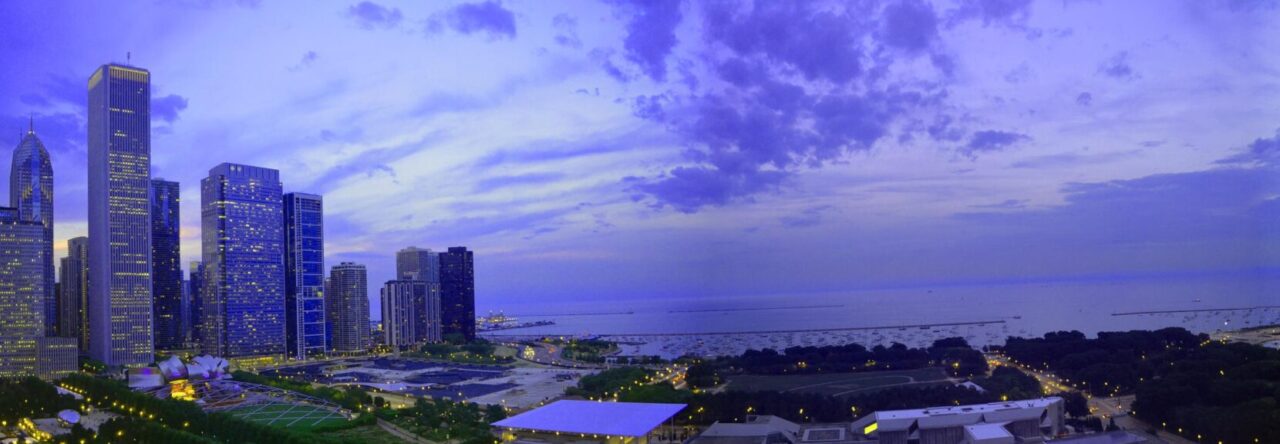I have been an enthusiastic adopter of the term “suburban experiment” after having following the magnificent work that Strong Towns does up in Minnesota. But it came to my attention that I have not fully explained it and applied it here in Chicago. So, I’d like to take a step back. Of course, since I did not invent the term, it’s best to direct you to the primary source. Chuck Marohn’s seminal articles on the suburban experiment note that:
“our post-World War II pattern of development — operates like a classic Ponzi scheme, with ever-increasing rates of growth necessary to sustain long-term liabilities.”
Meaning essentially that this form of development cannot fiscally sustain itself over more than one life cycle without more growth to pay off previous liabilities. Essentially, all of the infrastructure that supports the inefficient development pattern that is modern suburbia, the huge investment in roads and utilities to support sparsely dense areas, does not make economic sense after one life cycle.
We’re already seeing this today.
You know we can’t support our towns and cities when roads turn to gravel, when bridges collapse, streetlights get turned off and park districts, schools and municipal budgets are slashed despite ever rising taxes. It means that we’re not allocating our resources efficiently, that maybe the great wealth this country has had has been spent towards a pattern of development that just cannot sustain itself.

hardawan bayu
efficiency in developments, 🙂 crucial thing that i don’t even know how to start saying about it. but your post ignite positive thoughts about managing things we’ve already have. nice
Ryan Richter
Thanks. It’s becoming more and more difficult to manage what we already have which means we need to start making smart decisions now about what kinds of places we want to have in the future given our resources.
Amanda McMahon
what will be next – that’s the question – and will that next, be good enough for the following “next”
Ryan Richter
Funny enough, I think what will be next will be what has already come. A return to development patterns before WWII. And this isn’t necessarily a bad thing. Humans throughout history living in towns and cities have lived close to one another. The last 60 years have been an aberration in terms of town planning. As to the following next, who can say? Let’s just hope we’re using all of our available resources into making things right the first time.
Krystyna Lagowski
I can’t agree more. Cities all over North America are losing their way, and band-aid solutions just won’t do. In Toronto, we have year-round construction and it causes endless gridlock. You need to be a mountain goat just to get around! More long-term planning is needed but do we have the politicians with the vision to see it? We can only hope.
Ryan Richter
I don’t know if we have the politicians to do it. Rather, is there a will to change from among the people? So for people in cities, particularly in North America, we need to look at how we are building things and whether this makes sense for the future.
As for Toronto, I was there many years ago, but from the planners I have met from Toronto and the projects I have seen, it would appear that Toronto is light years ahead of most other North American cities in terms of building a quality place. For better or worse. But from what I’ve seen, I think it would be a pleasant place to live.
Mark Brody
Interesting read. I guess as growth becomes even more unsustainable, then ghost towns are created. What used to be blips on maps, become flatlines with no names to associate their past with their present.
Thank you for sharing!
Ryan Richter
I agree. I just don’t want our ghost towns to be giant suburbs. Hopefully we can figure a way to adapt to what our resources will allow.
Mary Slagel
I believe this is very interesting to think about especially in recent times when the housing market did take such a downturn and there are entire neighborhoods left half built with out any residents and entire neighborhoods planned out with streets but lack any structures. It’s bizarre to look at or even think of entire towns abandoned but they are. People always joke about a zombie apocalypse but if you look at some of these places, you would think it already has.
Ryan Richter
Yes, totally true especially at the far ends of most metro areas, not to mention big chunks of Las Vegas, for example. I think it will take a very long time for those areas to rebound.
Hola Backgrinder
To me the issue with suburbs is that they age poorly, and when they do they are locked because the best renewal device would be to flatten them and start over with all new roads, houses, and shops, but because an older generation has already bought in it’s too expensive to operate like that.
Ryan Richter
You’re exactly right. Suburbs do age poorly. Look at the ones built right after WWII. For the most part, they look terrible. They are also locked because the infrastructure has already been put into place. It’s fairly difficult to retrofit suburbs to more sustainable urban forms when you have to relocate all of that infrastructure.